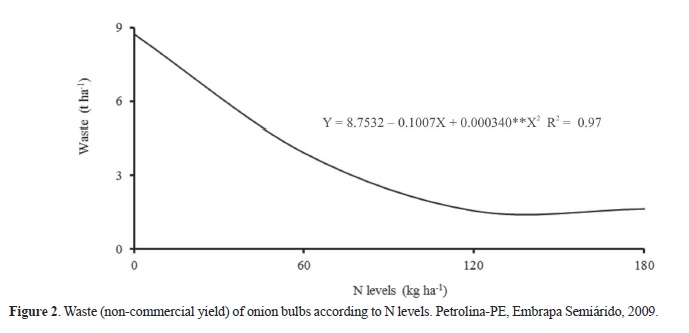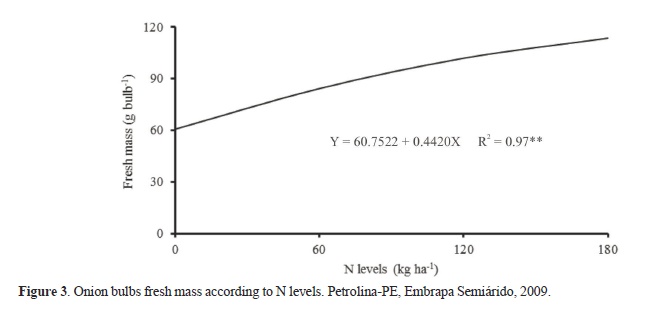Potassium and nitrogen are the elements present in the highest percentage in the onion dry matter. The objective of this experiment was to evaluate yield and post-harvest conservation of Vale Ouro IPA-11 onion cultivar regarding to nitrogen and potassium levels. The experiment was carried out in Petrolina-PE, Brazil, from June to September 2009. The experimental design was a completely randomized block in a 4 x 3 factorial design, composed of four nitrogen levels (0, 60, 120 and 180 kg ha-1) and three potassium levels (0, 90 and 180 kg ha-1) with three replications. The highest yield of commercial bulbs was achieved at an estimated N level of 172.6 kg ha-1. The lowest yield of noncommercial bulbs was estimated at N level of 147.0 kg ha-1. Lower percentage of smaller bulbs (class 2) were obtained by increasing levels of N x K, with a quadratic effect at the dose of 90 kg ha-1 K2O and minimum production point with 127.6 kg N ha-1 (20.3%). Regarding larger caliber bulbs (class 4), linear effects were found both in the absence and for the level of 90 kg ha-1 of K2O as levels of N were increased. When the highest level of 180 kg ha-1 K2O was applied, the level of 92.8 kg ha-1 of N was estimated as the one that would promote the highest bulb yield of this class (35.4%), and 5.3% was found in the lack of potassium fertilization.
Allium cepa; yield; nutrition; storage




